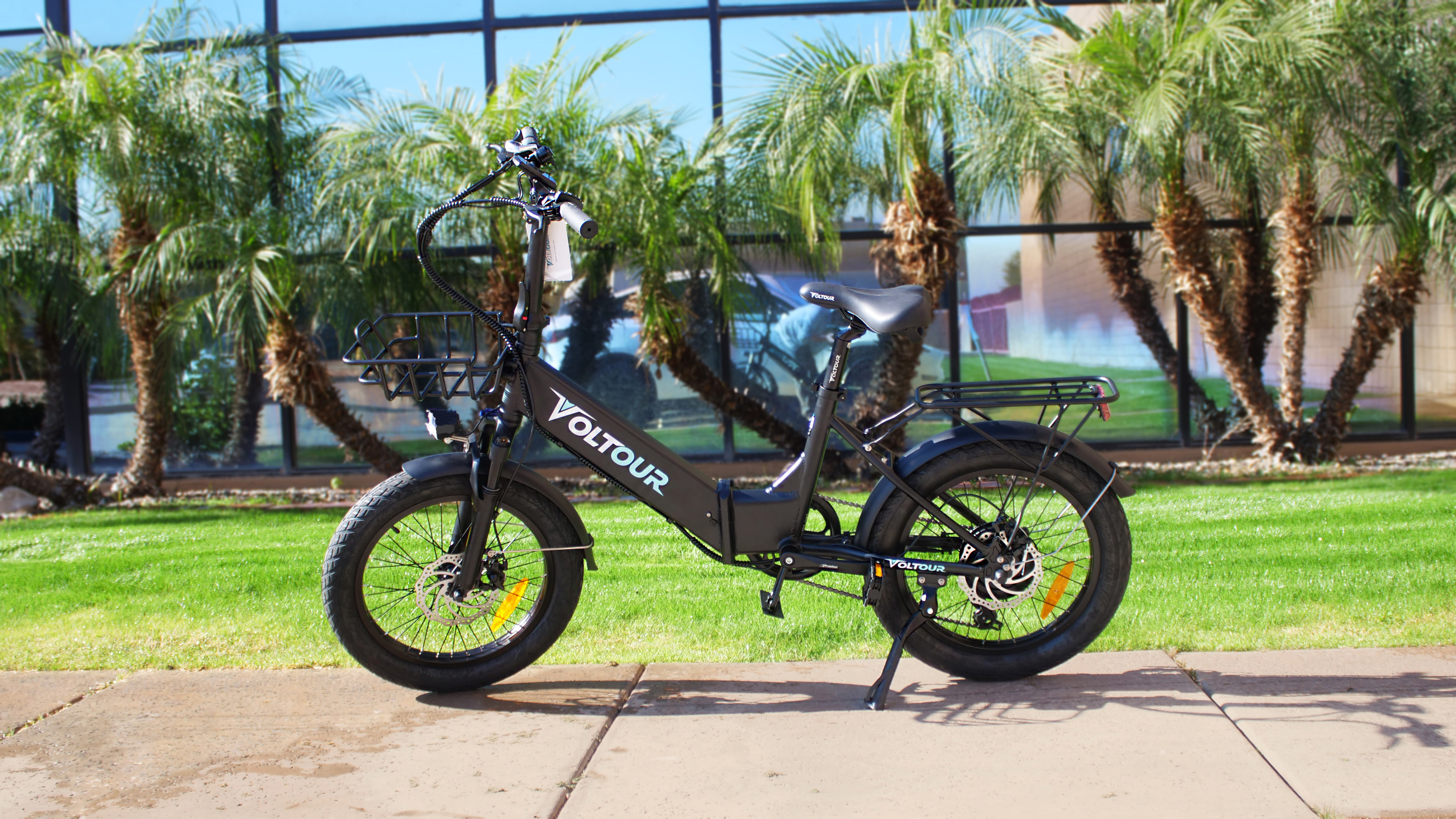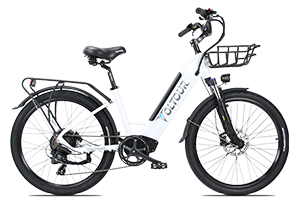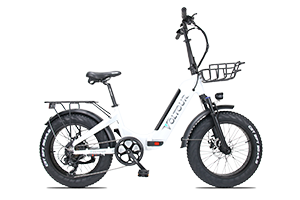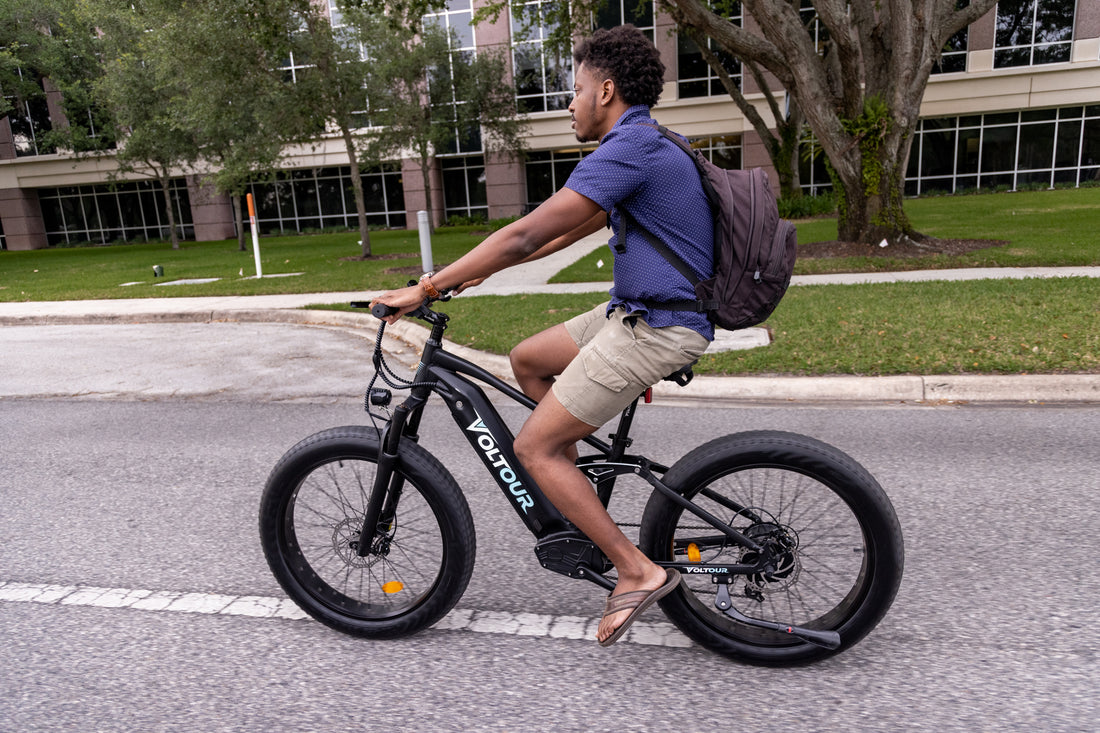Many cities and communities are creating infrastructure to accommodate e-bikes, such as bike lanes and charging stations. However, it's important for riders to prioritize safety when riding e-bikes and follow local laws and regulations.
Below is a list of 10 essential e-bike safety tips to help those of you already using them to make sure you are doing it safely and to encourage anyone thinking of giving them a try to take that step!
10 Essential E-bike Safety Tips
-
Always wear a helmet when riding an electric bike, as it can protect your head in case of a fall or collision. Helmets are especially important because e-bikes can reach higher speeds and have more powerful motors than traditional bikes, which can increase the risk of accidents. It is also important to note that in many places, wearing a helmet is required by law when riding an e-bike

-
Just like any other vehicle on the road, electric bikes are subject to traffic laws. Always obey traffic signals, stop signs, and other rules of the road because it can reduce the risk of accidents and collisions with other vehicles or pedestrians. It also helps to create a predictable and safe environment for all road users, including e-bikers.
-
Use hand signals to indicate when you're turning or changing lanes. Hand signals are an effective way to convey your intentions to other road users, such as drivers and other cyclists, and can aid in the prevention of accidents and collisions.
-
When riding your electric bike at night or in low-light situations, use front and rear lights. Front lights can assist you in seeing the road ahead and increasing your visibility to other road users, whereas rear lights can assist drivers and other riders in seeing you from behind.

-
Keep your bike well maintained. Make sure your electric bike is in good working condition before riding. Check the brakes, tires, and chain regularly to ensure they're working properly.
-
Keep the tires properly inflated, which can improve the handling of your bike and reduce the risk of punctures.
-
Ensure that the brakes are in good condition and adjust them as needed.
-
Keep the chain clean and lubricated to prevent it from getting dirty or rusty, which can cause poor shifting and even break.
-
Check the bolts and screws regularly to make sure they're not loose.
-
Check the battery and electrical system to ensure it's charged and the electrical connections are clean and secure.
-
-
Stay alert and aware of your surroundings when riding, and anticipate potential hazards such as potholes, debris, or other vehicles.
-
Keep your eyes on the road ahead.
-
Scan your surroundings regularly.
-
Be aware of blind spots.
-
Listen for any sounds that indicate potential danger, such as honking horns or screeching brakes.
-
Avoid distractions, such as using your phone or listening to music as this can reduce your awareness and reaction time.

-
-
Don't ride too fast for the conditions, and always slow down when approaching intersections, turns, or other potential hazards.
-
Wet roads can be hazardous, and it's easy to lose traction and control when riding too fast. Slow down and be cautious when riding on wet or slippery surfaces.
-
When riding in areas with pedestrians, other cyclists, or busy traffic, it's important to slow down and be alert. Keep a safe distance from other road users and be prepared to stop suddenly if needed.
-
Narrow or winding roads can be challenging, and it's important to reduce your speed to maintain control and avoid collisions.
-
When visibility is poor, such as during fog or heavy rain, it's essential to slow down and be extra cautious.
-
When climbing uphill, it's important to maintain a speed that allows you to keep control of the bike and avoid losing balance.
-
-
Wear bright or reflective clothing, and use lights and reflectors on your bike to increase visibility.
-
Wearing bright or reflective clothing makes you more visible to other road users, especially in low-light conditions or at night.
-
Bright colors create contrast against the background, making it easier for other road users to see you and avoid collisions.
-
Wearing bright or reflective clothing can help distinguish you from the surroundings and other road users, making it easier for drivers and pedestrians to spot you.
-
By making yourself more visible, you can reduce the risk of accidents and stay safe while riding your e-bike.

-
-
Don't use your phone or other electronic devices while riding, and avoid listening to music or other audio that could distract you from the road.
-
Using your phone or other electronics while riding can be a major distraction, reducing your awareness of your surroundings and your ability to react to potential hazards.
-
When your attention is focused on your phone or other electronics, your reaction time to potential hazards is significantly reduced, increasing the risk of accidents.
-
Using your phone or other electronics while riding can impair your judgment, causing you to make poor decisions that can lead to accidents.
-
In many places, it is illegal to use a phone or other electronics while riding an e-bike, and you can face fines and penalties if caught.
-
Using your phone or other electronics while riding an e-bike is a significant safety risk that can lead to accidents, injuries, and even fatalities.
-
-
Consider taking a safety course to improve your riding skills and learn more about safe riding practices.

E-bikes offer a convenient and eco-friendly means of transportation, but it's important to prioritize safety when riding them. Some key safety considerations when riding e-bikes include wearing a helmet, following traffic laws, using hand signals and lights, maintaining the bike in good condition, being aware of your surroundings, avoiding distractions, and taking a safety course. By following these safety tips, riders can help ensure their own safety and the safety of others when riding e-bikes.








